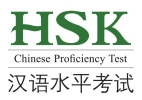HSK Chinese Proficiency Test
| Previous | 3 / 3 | Next |
HSK measures the proficiency level of non-native speakers of standard Chinese and is used as a guideline for admission to colleges and universities in China and Southeast Asia. Test-takers are issued certificates when they meet the minimum level of proficiency required within each level of testing. Because the HSK has developed a prominent status in assessing Chinese language proficiency, it is commonly used as a reference standard in job recruiting, both within China and in countries around the world where Chinese language skills are necessary.
The HSK consists of two independent parts: written test and oral test. The written test can be divided into six levels from HSK Level 1 to HSK Level 6. As a test of general language proficiency, HSK is differentiated by six levels of difficulty, while the oral test can be divided into three levels of HSKK (Beginner), HSKK (Intermediate), HSKK (Advanced), and the candidates’ on-site performance will be recorded.
Level 01
Can understand and use very simple Chinese words and phrases, meet basic needs for communication and possess the ability to further their Chinese language studies.
Level 02
Have an excellent grasp of basic Chinese and can communicate in simple and routine tasks requiring a simple and direct exchange of information on familiar and routine matters.
Level 03
Can communicate in Chinese at a basic level in their daily, academic and professional lives. They can manage most communication in Chinese when traveling in China.
Level 04
Can converse in Chinese on a wide range of topics and are able to communicate fluently with native Chinese speakers.
Level 05
Can read Chinese newspapers and magazines, enjoy Chinese films and plays, and give a full-length speech in Chinese.
Level 06
Can easily comprehend written and spoken information in Chinese and can effectively express themselves in Chinese, both orally and on paper.
The results of the test can serve several purposes:
- A reference for an educational institution’s decision-making concerning recruiting students, assigning students to different classes, allowing students to skip certain courses and granting students academic credits.
- A reference for employers’ decision-making concerning the recruitment, training and promotion of test takers.
- A method for Chinese language learners to assess and improve their proficiency in Chinese.
- A method for Chinese language training institutions to evaluate training results.

